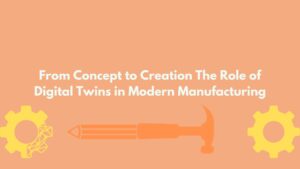Introduction
In today’s fast-paced manufacturing landscape, productivity is more critical than ever. With increasing global competition and rising customer expectations, manufacturers must continually find ways to enhance efficiency and output. One of the most effective approaches is adopting innovative techniques that drive productivity to new heights.
The Role of Technology
Advanced manufacturing technologies have revolutionized the industry. Automation and robotics, for instance, have drastically reduced the time and labor required for various processes. Automated systems can perform repetitive tasks with precision and consistency, minimizing human error and freeing up workers for more complex duties.
Case Study: Company X integrated robotic arms into their assembly line, resulting in a 30% increase in production speed and a significant reduction in defect rates. This implementation not only boosted productivity but also improved overall product quality.
Lean Manufacturing Principles
Lean manufacturing, a methodology focused on minimizing waste and maximizing value, is another powerful tool for enhancing productivity. By streamlining processes and eliminating non-value-added activities, manufacturers can achieve more with less.
Tips for Implementation:
- Conduct regular value stream mapping to identify and eliminate waste.
- Foster a culture of continuous improvement among employees.
- Implement just-in-time production to reduce inventory costs and improve cash flow.
Employee Training and Development
Skilled labor is the backbone of modern manufacturing. Continuous training and development ensure that employees are equipped to handle advanced technologies and processes. Investing in workforce development not only enhances productivity but also boosts employee morale and retention.
Strategies:
- Provide regular training sessions on new technologies and best practices.
- Encourage cross-functional training to build a versatile workforce.
- Offer incentives for employees who acquire new skills and certifications.
Sustainable Manufacturing Practices
Sustainability is no longer a buzzword; it’s a necessity. Sustainable manufacturing practices not only protect the environment but also drive efficiency and cost savings. By reducing waste, conserving energy, and optimizing resource use, manufacturers can enhance productivity while being environmentally responsible.
Examples:
- Implementing energy-efficient machinery and lighting.
- Recycling and reusing materials to minimize waste.
- Adopting green supply chain practices to reduce carbon footprint.
Conclusion
Maximizing productivity in manufacturing requires a multifaceted approach. By embracing advanced technologies, lean principles, continuous employee development, and sustainable practices, manufacturers can significantly enhance their efficiency and output. The future of manufacturing is bright for those willing to innovate and adapt. Now is the time to adopt these innovative techniques and propel your manufacturing operations to new heights of productivity.









